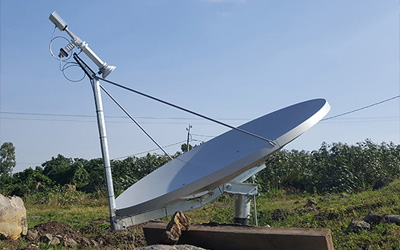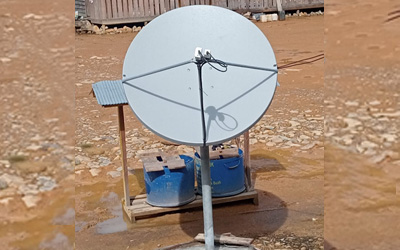
VSAT STARLINK TECHNOLOGY
Starlink is the world's first and largest satellite constellation that uses low Earth orbit to provide broadband internet capable of supporting streaming, online gaming, video calling, and more.
Leveraging state-of-the-art satellite and user hardware coupled with our deep experience in spacecraft operations and in-orbit operations, Starlink provides high-speed, low-latency internet to users around the world.

VSAT C BAND
C band was previously used for satellite communication systems. C band operates large antennas (minimum 1.8 meters in diameter) with a frequency range of 3.7 – 4.2 GHz for communication from satellites to receivers on earth (downlink), and 5.9 – 6.4 GHz for communications from receivers on earth to satellites (uplink).

VSAT KU BAND
KU Band is a network that was born after C Band. KU Band has a frequency range of 11.7-12.2 GHz for communication from satellites to receivers on earth (downlink). 14.0-14.5 GHz for communication from receivers on the ground to the satellite (uplink). KU Band, typically, is used for broadcast and two-way internet connection. The KU Band frequency range is allocated exclusively for use by satellite communication systems, eliminating interference problems with terrestrial microwave systems. Due to the smaller wavelength and wider bandwidth, it is possible to use a receiving antenna with less power but greater internet speed capacity.

VSAT MOBILE
Vsat Mobile is a satellite signal receiving/sending device, or also known as a ground station integrated with a trailer that can be easily moved.

VSAT KA BAND
KA Band is the most advanced VSAT technology compared to KU Band or C Band. KA Band has a frequency range of 26.5–40 GHz, and has a wavelength range of 5.0-11.3 mm. KA Band, is used to present real broadband internet on VSAT technology. Services on the KA Band network are referred to as services with true broadband internet speeds because they are able to offer download speeds of up to 35Mbps and even 60Mbps at each location. This speed is a regular service package offered by KA Band technology. KA Band internet speed is said to be able to compete with optical cable internet speed. By using the same dish size as the Ku Band, a 1.2 meter dish, this technology is highly anticipated.